The land of stunning nature, city squares frozen in time, and food to die for, is the place in the Balkans worth your time. Through this blog, you will know the beauty of national parks and mountains, the cultural heritage of Bosnia and Herzegovina's cities, and unique destinations that will make your vacation perfect. Some of the spots we’ll go through together are:
- Tourism in Sarajevo
- Neum - Should you spend your summer vacation in Bosnia?
- Mountains in Bosnia - Spend your winter vacation in Bosnia and Herzegovina
- Lakes and springs in Bosnia - Most visited attractions in Bosnia

Things to know before visiting Bosnia
Planning a trip to Bosnia and Herzegovina won't give you trouble. Here are some of the basics to know before you travel to Bosnia, and everything else you'll quickly learn along the way:
- Where is Bosnia and Herzegovina located - In southeastern Europe, this small but unique country is positioned on the Balkan peninsula. The former Yugoslavian country has Serbia, Montenegro, and Croatia as its neighbors. One tiny piece of land brings you to the Adriatic as well.
- What is the capital of Bosnia and Herzegovina - Sarajevo is the capital of this country, a city that perfectly showcases the complexity of Bosnia. It's where WWI brewed, home of the first tram in Europe, the best Turkish delight you will ever try, and a former Winter Olympics host.
- Which currency is used in Bosnia and Herzegovina: BiH uses a convertible mark, which comes in paper and coin form. You can get around 180KM for $100. You also won't have trouble finding exchange offices in bigger cities. We suggest having cash at all times.
- What language is spoken in Bosnia and Herzegovina: Yes, it is the Bosnian language, but if you speak Croatian, Serbian, or even Macedonian, people will understand you. Even though languages spoken by ex-Yugoslavian nations are similar, their accents are distinctive.
- What is Bosnia and Herzegovina known for: This part of the world has witnessed many devastating wars but managed to conceal its identity. The coffee culture in Bosnia is strong, so don't be surprised if you see people sitting for hours sipping their black coffee made traditionally. Bosnia is famous for its cuisine, from aged meats to fabulous cheeses and BBQ. Learn more about Bosnian food in our blog - Bosnian cuisine.

Where to go in Bosnia - Visit the famous Bosnia and Herzegovina tourist places
Cities in Bosnia and Herzegovina are the hotspots of tourism in Bosnia. From the exciting Sarajevo to traditional Mostar and summery Neum, we'll go through some of the best tourist places that Bosnia has to offer. Prepare for long walks on cobbled streets, wine tastings, bridges for days, and unique landspaces.
Tourism in Sarajevo
Known as the European Jerusalem or the Damascus of the North, the Olympic city, Bosnia and Herzegovina's capital, Sarajevo is among the most beloved Bosnian cities. And for a reason. Sarajevo was built under different cultural influences, which are still clearly recognizable today. Just one walk takes you to Orthodox and Catholic churches, mosques, and synagogues. Most of the attractions and points of interest are located in the very center of the city. What Sarajevo is most recognizable for is the famous Baščaršija, a small but significant part of the city that is always bustling with life.

The best ways to experience Sarajevo are:
- Explore Baščaršija: This part of Sarajevo stands out, the old part of the city and its historical center. At the time it was built, in the 15th century, it got its sonorous name, Başcarşija, which means the main bazaar in Turkish. It is crisscrossed by alleys, many of which bear the names of old trades for which they were once known. They are filled with old craft shops, goldsmiths, souvenirs, beer shops, taverns, and kebab shops. However, the main feature of Baščaršija, and of all of Sarajevo, is the Baščaršija sebilj, that is, a fountain with a fountain that was built in the 19th century. In addition, there are many other sights in Baščaršija, such as the Clock Tower, Gazi Husrev Bey Mosque, and Bezistan.

- Go on a Sarajevo walking tour: Who would give you better insight than a local? Best walking tours in Sarajevo are free, but you will be asked to give a tip you deem appropriate. Learn about Sarajevo's history, architecture, and urban legends, taste the best local food, and meet tourists from around the world. Favorite spots on these tours usually are bridges. The river that flows through Sarajevo is the famous Miljacka. It is crossed by ten bridges, among which those of great historical importance stand out, such as Princip's Bridge, in the immediate vicinity of the Sarajevo assassination.
- Cable car ride in Sarajevo: The views from the Trebevićka cable car are immaculate, trust us. This ride lasts about 8 minutes and connects the city with Trebević mountain. Booths can fit up to 10 people, but there are 33 of them, so there is a chance you will get one all for yourself. This ride will cost you 20KM for a round trip, and 15KM for one way.

Trebinje - Taste of Italy in Bosnia
If you want to spend your vacation in the southern part of Republika Srpska, one of the most visited destinations is Trebinje. The city faithfully preserves its history and tradition, as evidenced by numerous monasteries, cultural manifestations, and memorial of the great poet from this region - Jovan Dučić. It's also called the city of the Sun, which is no wonder as it has many sunny days a year. And don't even get us started on the wine and cheese! To get the best feel of the city, don't miss out on the following:
- Trebinje Old town: Situated on the right bank of Trebišnjica, the Old town of Trebinje was built in the 18th century. The old spirit of the city and the special energy and warmth can be felt only in this part of the city. The old part of Trebinje, known as Kastel, is decorated with narrow cobbled streets filled with old shops and restaurants with local food. Due to its architecture which merges with the river Trebišnjica, it reminds of Italian seaside towns.

- Monasteries of Trebinje: This town is surrounded by many monasteries worth visiting, even if you don't consider yourself spiritual. Herzegovinian Gračanica was built at the request of Jovan Dučić and is one of the favorite religious destinations of this area; Tvrdoš Monastery belongs to the oldest cultural and historical monuments in the Republic of Srpska. The monastery is still famous for the production of wine, which is still produced today in restored vineyards. If you're in the area, don't forget to look for this wine, it would be the best souvenir.
- Picnic and adventure spots: These are ideal if you plan to visit Trebinje on a family trip. There are many picnic spots near Trebinje; some of the most important are Lastva, Studenac, and Ubla. Besides landscaped areas with benches, there are some fun attractions. The Zubačka Ubla picnic area has an adrenaline park with obstacle courses for the youngest. For a more elaborate adrenaline adventure, go to Grad Sunca, where you can play with dinosaur replicas besides exciting slides and obstacles.

Mostar - Jump from a UNESCO heritage monument
Mostar is the fifth largest city in Bosnia and Herzegovina. This pearl on the Neretva can easily be considered an open museum. In 2004 Mostar Old town and the Old Bridge were included in the UNESCO list of guardians of world cultural heritage monuments. The whole city exudes tradition, so it is not surprising that the most famous Mostar attractions are connected by cobbled streets in the old part of the city, known as Kujundžiluk. Old craft shops with unique products can be found at almost every turn, and smiling artisans await customers at the doors of their shops. However, what is it that makes Mostar so unique? It was named after the bridge it is home to, which has also been showcased in famous Yugoslavian films. It doesn't represent a crossing over the river Neretva but also a bridge connecting two cultures. Every year, mainly in May, brave divers dare to jump from the highest spot on the bridge to the cold Neretva. Depending on the time of the year, this could mean a 20-27 meter fall! Even if you don't plan on doing it, watching the spectacle of it all is always great fun.

Neum - Should you spend your summer vacation in Bosnia?
Did you know that Bosnia and Herzegovina has its own piece of sea? In its southern part, the Dalmatian Riviera breaks off to give way to a small Bosnian resort, Neum. Neum is located in the Herzegovina part of the country, in its southwest, and is its only coastal town. Bearing in mind its location, it is not surprising that Neum is one of the cities with the highest number of sunny days during the year. Although a typical coastal town on the Adriatic, Neum stands out for its Bosnian hospitality and delicious food. Here are some pros and cons of spending your summer in Neum:
- It's super affordable: This is easily one of the cheapest summer destinations in Europe. On average, you won't be spending more than $450 for a full week in Neum. Accommodation can be found for as little as $40 per day, you could be eating out every day and still spending less than $15, and local tours and activities don't even have to cost you a penny.

- It's a small resort: Now, depending on what type of traveler you are, this can be a good and a bad thing. Yes, you will have your privacy, and not many people are still aware of it. But that also means the tourist offer isn't vibrant or adapted for younger crowds looking for wild nightlife. We suggest you rent a car and go exploring surrounding attractions and towns in between sunbathing.
- Beaches and roads are not the best: If you're a fan of sandy beaches, this is not the spot for you. All four Neum beaches are pebbled. But they are great for children and people who are not great swimmers. Roads, however, can be tricky to navigate, which is why we don't advise coming to Neum with your vehicle.

Explore Bosnian nature
These are the real jewel of Bosnian tourism. World-famous national parks, fairytale-looking springs, and skiing heaves of Europe are just the start. We'll walk you through attractions in Sutjeska and Kozara national parks you shouldn't miss, tell you how to spend your time on Pliva, ad when to explore the famous Olympic mountains.
Bosnian national parks - Top Bosnia and Herzegovina destinations
In Bosnia and Herzegovina, you can visit four national parks, which will take you to the northern and eastern parts of the country. The most famous national parks in this country were established in the 60s; they include parts of the Dinarides and cover around 50 thousand acres. Besides being the *chef's kiss* destinations for nature lovers, photographers, and landscape seekers, these parks in Bosnia and Herzegovina are UNESCO recognized. Here are just some of them.

Sutjeska National Park
Sutjeska is the oldest national park in Bosnia and Herzegovina, founded way back in 1962. At the same time, it is the largest park in this area, occupying over 17,000 hectares of diverse green space. Sutjeska National Park combines nature with history, making it one of the most visited tourist places in Bosnia.
- Nature of Sutjeska National park: It is interesting that Perućica, one of the four last remaining rainforests in Europe, is part of this national park. This area is also occupied by picturesque natural landscapes, including forests with different types of trees, the Sutjeska river canyon, glacial lakes, pastures, and mountain massifs, among which Prijevor stands out.
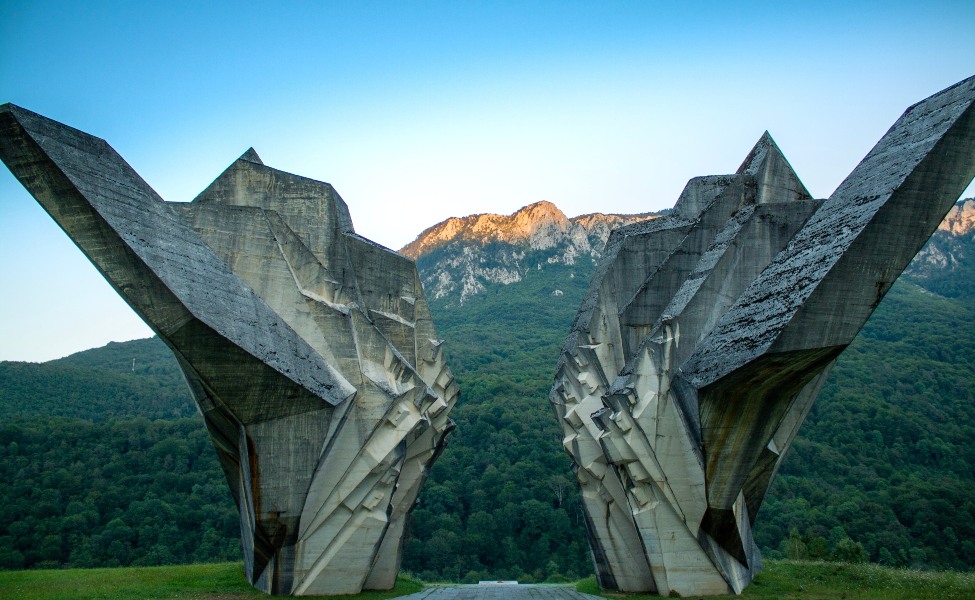
- Valley of Heroes: The central part of the park is Tjentište, where the Valley of Heroes memorial complex dedicated to the battle of the National Liberation War stands. Within it are the resting places of fighters from Sutjeska and a magnificent monument of the sculptor Miodrag Živković. The memorial was erected in honor of the fallen partisan fighters of the Sutjeska Battle and is one of the most beautiful examples of Yugoslav socialist art.
- How much does it cost to enter Sutjeska National Park: A one-time ticket to the memorial complex will cost you 5 KM, but if you want to explore the whole park, be ready to spend 10 KM. There are also annual passes, which will cost you around 30km.
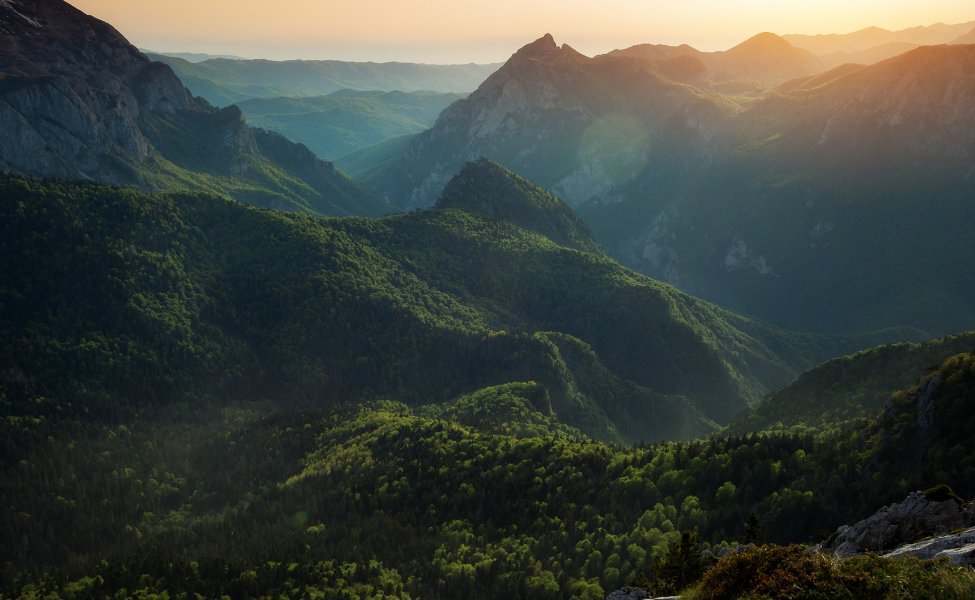
Kozara National Park
Another national park that is part of the natural and cultural-historical wealth of Bosnia and Herzegovina. Located in the central part of the mountain of the same name, the Kozara National Park covers an area of over 3,900 ha. Given that none of Kozara's peaks exceed 1,000 meters, it is perfect for all those nature lovers who are used to easy hiking.
- Flora and fauna of Kozara NP: Like Sutjeska, this park is enriched by deciduous and coniferous forests, streams, valleys, and mountain peaks. The paths are fully landscaped and labeled. Within it, there are trim tracks, a climbing area, and areas suitable for hunting. Numerous canyons, gorges, and ridges are a special treat. On your walk around the park, you could encounter species of foxes, pigeons, ferrets, squirrels, groundhogs, and wolves.

- Kozara monuments: The central part of this park is also occupied by a memorial complex, this time dedicated to the fallen soldiers and civilians during the battle of Kozara in 1942. On the top of Mrakovica rises the Monument to the Revolution, the work of the Yugoslav sculptor Dušan Džamonja. A monument of the socialist era in the middle of a conifer forest is genuinely one of the most impressive sights you can get.
- Kozara National Park entrance fees: One of the significant advantages of this national park is that you can buy a half-yearly ticket for 20 KM, and an annual ticket that costs 30 KM. Of course, it is possible to buy one-day tickets at a price of 2 KM for adults and 1 KM for children. The money collected from ticket sales is used to protect and preserve Kozara National Park.

Mountains in Bosnia - Spend your winter vacation in Bosnia and Herzegovina
Centers of winter tourism, places where you can try your hand at adrenaline activities, and untouched nature worthy of a postcard are only part of what makes the mountains in Bosnia stand out. Some of them were the hosts of the Winter Olympic Games and have preserved memories of that to this day, while others hide unique mountain lakes. Continue reading as we single out two of the most visited mountains in Bosnia and Herzegovina.
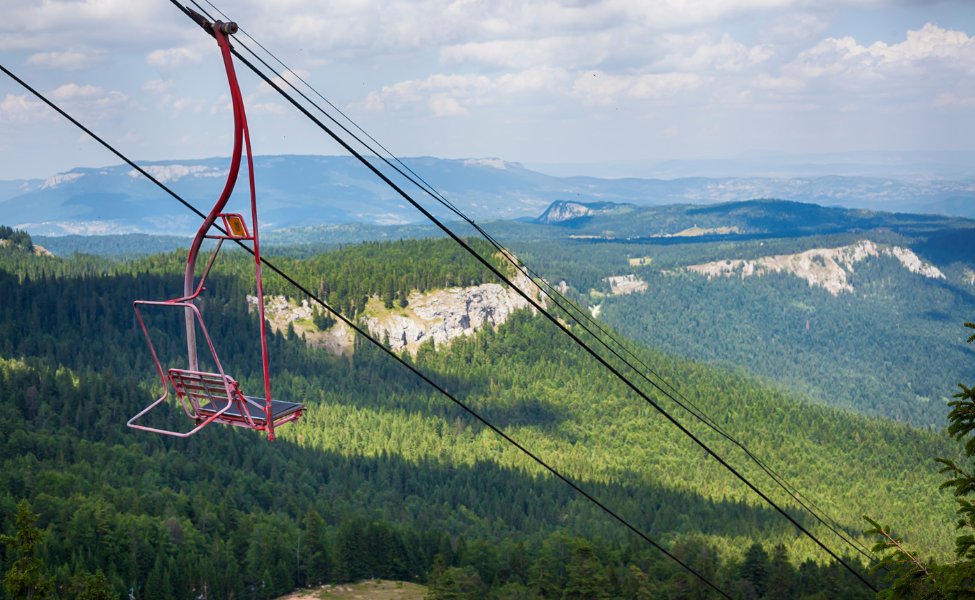
Bjelašnica
In central Bosnia and Herzegovina, located less than 40 kilometers from Sarajevo, this Dinaric mountain is a favorite Bosnian ski destination. It got its name from the many days it spends covered with snow, as its peaks hold a white (bjelo - bjela) blanket for a very long time. The highest peak is located at 2067 meters above sea level, and there is a famous meteorological station on it, opened in 1878. At that time, it was the first high-altitude station in the Balkans. Interestingly, the winter centers on this mountain came to life in 1984 when the Winter Olympic Games were held in Sarajevo. Babin Do is the most famous ski center in winter, and in summer, it is a favorite excursion spot for many visitors. At an altitude of over 2,000 meters, there are 14 kilometers of ski trails. Of course, in the summer, Bjelašnica is also suitable for visits, when you can indulge in hiking, cycling, panoramic sightseeing by cable car, and many other activities. There are also two mountain villages in the vicinity, known as inhabited places with the greatest altitude.
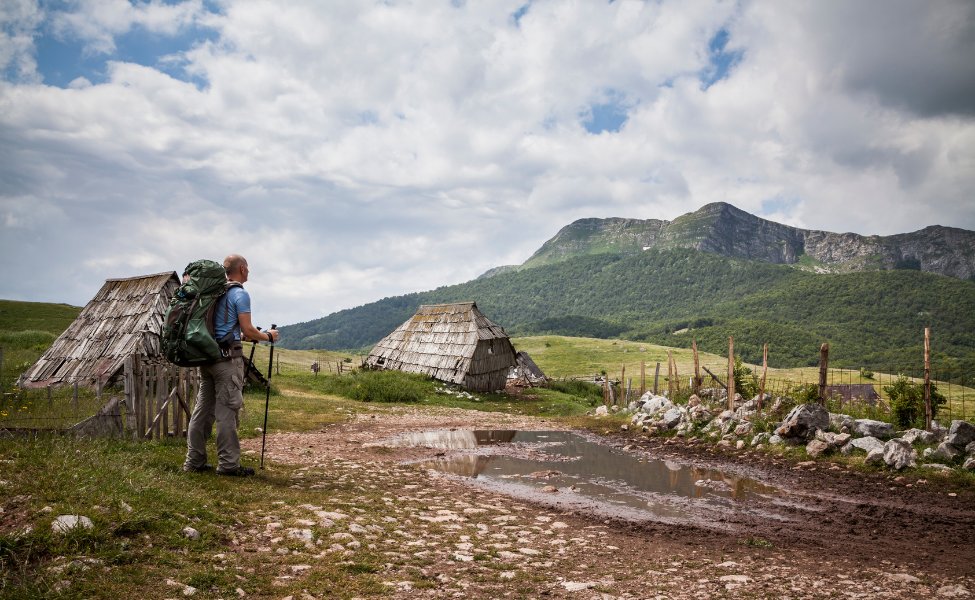
Jahorina - Ski hotspot of Bosnia
This mountain is one of the most visited mountains in Bosnia. Due to its rich offer, Jahorina gathers skiers of diverse skill sets. Arranged with 5 kilometers of trails for night skiing and 11 homologated ski trails, it is considered the most modern ski center in the Southeastern part of Europe. The trails are adapted to skiers of different levels, so you can choose the one that suits you best, from the easy ones to the most difficult trails adapted to the most experienced skiers. The highest peak of Ogorjelica is located at 1,916 meters high. Although the average day under the snow is over 150, in the summer Jahorina turns from white to a green oasis rich in flora and fauna. Since the original name of the mountain was Javorina, after the Greek maple that found its home here, don't miss the opportunity to walk through the woods, and see for yourself the beauty of these trees, which are a feature of the entire mountain.
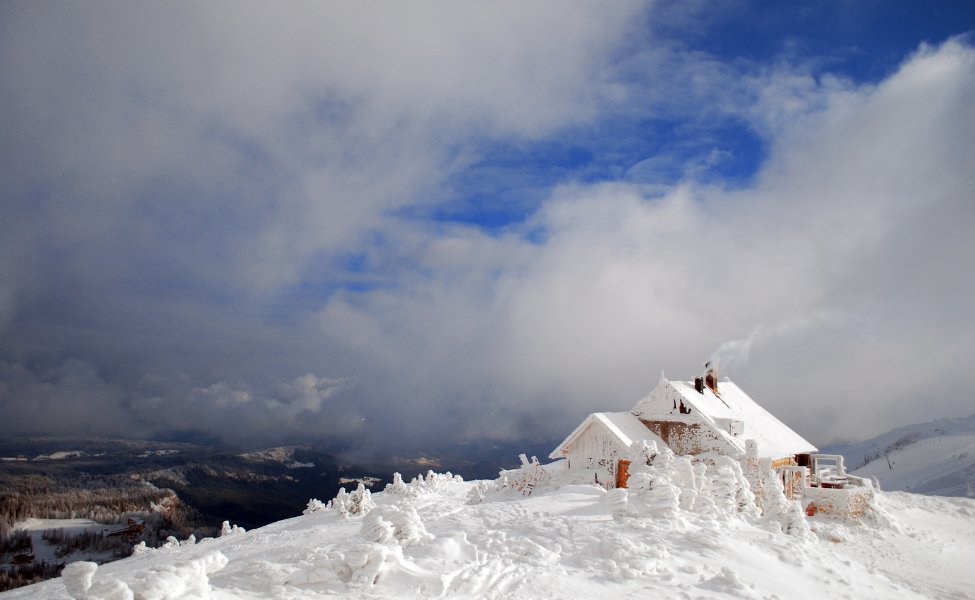
Lakes and springs in Bosnia - Most visited attractions in Bosnia
We cannot go through a virtual tour of Bosnia and Herzegovina attractions without mentioning some of its lakes and springs. The lakes in Bosnia are known as the cleanest in the region and occupy more than 65km of land. After exploring them, head to the hot springs in the central part of Bosnia, unique places that great for a picnic. We'll introduce you to three of them, the rest you'll have to find on your own.

Pliva lakes
Located about 75 kilometers from Banja Luka, they are an easily accessible attraction of Bosnia and Herzegovina with so much to explore. It begins its existence in the Pliva river valley, where it is divided into Small and Large Lakes. You will love the large lake if you're a fan of water sports, as kayaking, canoeing, and rowing competitions are held there annually. The Small lake is slightly shorter but definitely worth a visit. The main attraction on the lakes, or rather between them, are 20 mills located next to each other on the Pliva river. There is a path to follow to each of the mills, and we encourage you do to it (carefully, tho, it can be slippery). However, if you decide to follow the Pliva river to the town of Jajce you will find the most stunning waterfall there is. It is also the only waterfall in the world located in the central part of the city.
Check out our blog - Waterfalls in Bosnia, to learn more about why you should visit them all asap.
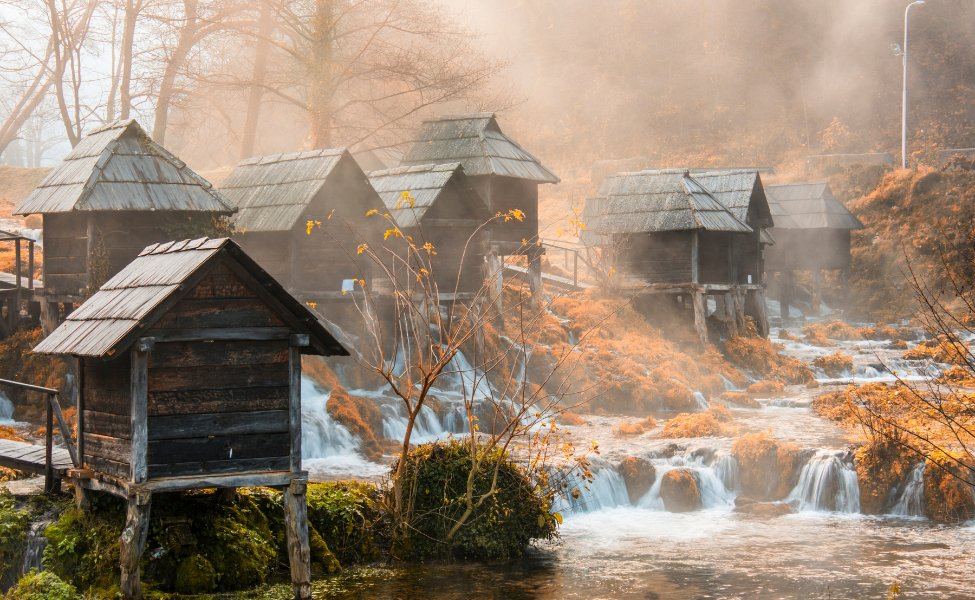
Spring of the Bosna River
This unique natural monument covers about 603ha of land. On the outskirts of Sarajevo, at the foot of the Igman and Bjelašnica mountains, is the source of the Bosna River. The importance of this river was recognized early on, so thermal spas were built on this site. Even today, there are remains of Roman and Austro-Hungarian buildings. However, the complex is now fully decorated and suitable for tourist visits. The main walking path leads streches from Ilidža to the spring. It is enriched with rows of trees dating back to the 19th century. The entire area around the spring is decorated with benches and wooden bridges, and there is no shortage of animals, such as ducks, swans, and fish. Hidden in the shade of trees, this hot spring is one of the most visited attractions in the entire country. The water of the Bosna River is believed to have healing properties. After visiting the hot springs, you can take a break in a restaurant that serves freshly caught trout and let the little ones play in nature or in the playground. The ideal time to visit would be during spring or summer when nature is in full bloom, and the water is rising. Entrance to the Bosna hot spring area costs 2 KM.
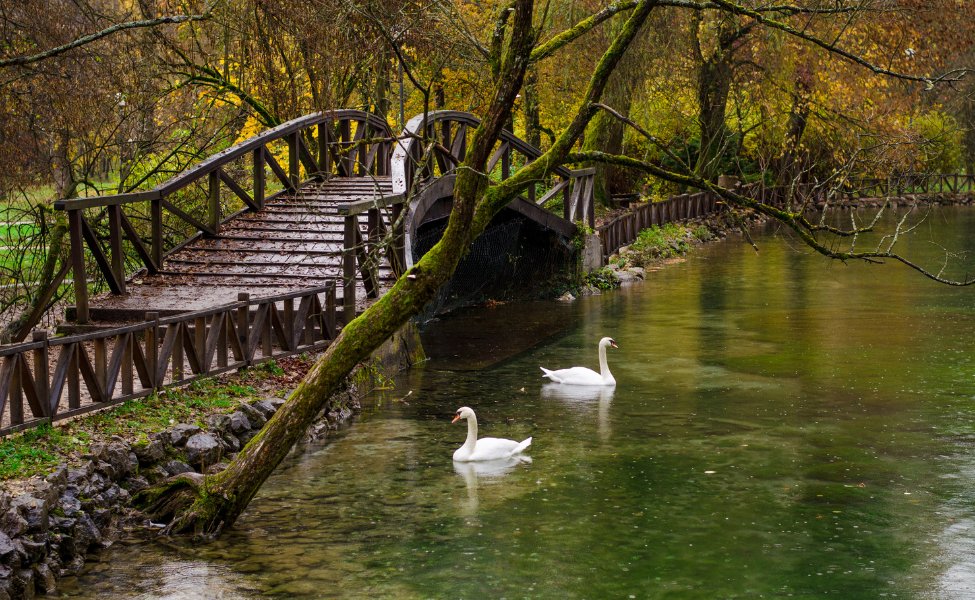
Our trip ends here, but yours is just starting. Whether you've read our blog in preparation for a trip or it made you put travel to Bosnia on your vision board, we're sure you'll love it once you're there. Get ready to eat some of the best food there is, witness unique cities, and have the vacation of your life. Bon voyage!



